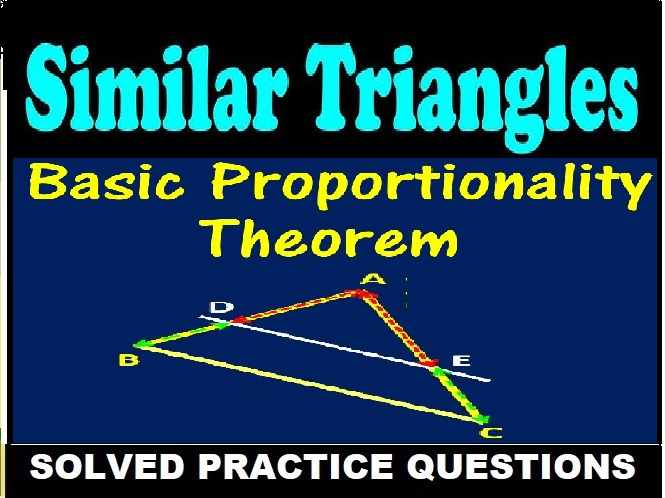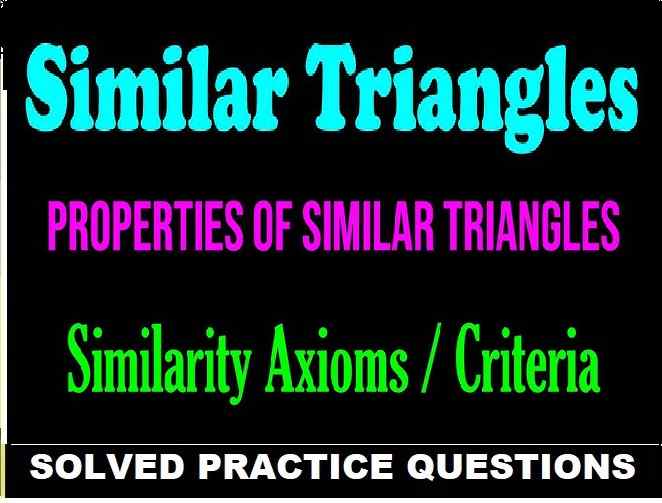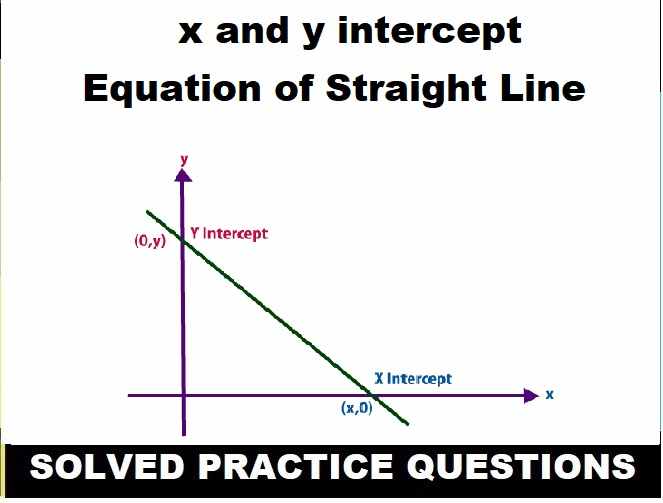Chemistry 2017 Solved Paper Previous Year Question ICSE
Chemistry 2017 Solved Paper Previous Year Question ICSE with Sample Paper for 2020 and Other Previous Year Solved Question for practice so that student of Class 10th ICSE can achieve their goals in next exam of council. Sample paper for Chemistry for 2020 exam also given . Hence by better practice and Solved Question Paper of Previous Year including 2017 is very helpful for ICSE student. By the practice of Chemistry 2017 Solved Question Paper ICSE Previous Year you can get the idea of solving. Try Also other year except Chemistry 2017 Solved Question Paper ICSE Previous Year for practice. Because only Chemistry 2017 Solved Question Paper ICSE Previous Year is not enough for preparation of council exam.
ICSE Chemistry 2017 Solved Paper Previous Year Question
(Two hours)
Answers to this Paper must be written on the paper provided separately.
You will not be allowed to write during the first 15 minutes.
This time is to be spent in reading the Question Paper.
The time given at the head of this paper is the time allowed for writing the answers.
Section I is compulsory. Attempt any four questions from Section II.
The intended marks for questions or parts of questions are given in brackets [ ].
Previous Year Solved Question Paper Chemistry 2017
Section-I [40 Marks]
(Attempt all questions from this Section)
Question 1.
(a) Fill in the blanks from the choices given in brackets: [5]
(i) The energy required to remove an electron from a neutral isolated gaseous atom and convert it into a positively charged gaseous ion is called ………. (electron affinity, ionisation potential, electronegativity)
(ii) The compound that does not have a lone pair of electrons is (water, ammonia, carbon tetrachloride)
(iii) When a metallic oxide is dissolved in water, the solution formed has a high concentration of ions. (H+, H3O+, OH–)
(iv) Potassium sulphite on reacting with hydrochloric acid releases ………….. gas. (Cl2, SO2, H2S)
(v) The compound formed when ethene reacts with Hydrogen is ………………………… (CH4, C2H6, C3H8)
Answer: 1
(a) (i) ionisation potential
(ii) carbon tetrachloride
(iii) OH–
(iv) SO2
(v) C2H6
(b) Choose the correct answer from the options given below: [5]
(i) A chloride which forms a precipitate that is soluble in excess of ammonium hydroxide, is:
1. Calcium chloride
2. Ferrous chloride
3. Ferric chloride
4. Copper chloride
Answer:(b) (i)
4. Copper chloride
(ii) If the molecular formula of an organic compound is CioH18 it is:
1. alkene
2. alkane
3. alkyne
4. Not a hydrocarbon
Answer:(b) (ii)
3. alkyne
(iii) Which of the following is a common characteristic of a covalent compound?
1. high melting point
2. consists of molecules
3. always soluble in water
4. conducts electricity when it is in the molten state
Answer:(b) (iii)
2. consists of molecules
(iv) To increase the pH value of a neutral solution, we should add:
1. an acid
2. an acid salt
3. an alkali
4. a salt
Answer:(b) (iv)
3. an alkali
(v) Anhydrous iron(III) chloride is prepared by:
1. direct combination
2. simple displacement
3. decomposition
4. neutralization
Answer:(b) (v)
1. direct combination
(c) Identify the substance underlined, in each of the following cases: [5]
(i) Cation that does not form a precipitate with ammonium hydroxide but forms one with sodium hydroxide.
(ii) The electrolyte used for electroplating an article with silver.
(iii) The particles present in a liquid such as kerosene, that is a non electrolyte.
(iv) An organic compound containing – COOH functional group.
(v) A solid formed by reaction of two gases, one of which is acidic and the other basic in nature.
Answer:(c)
(i) Copper
(ii) Sodium argento cyanide
(iii) molecules
(iv) Carboxylic acid
(v) Ammonium chloride
(d) Write a balanced chemical equation for each of the following: [5]
(i) Action of cold and dilute Nitric acid on Copper.
(ii) Reaction of Ammonia with heated copper oxide.
(iii) Preparation of methane from iodomethane.
(iv) Action of concentrated sulphuric acid on Sulphur.
(v) Laboratory preparation of ammonia from ammonium chloride.
Answer:(d)
(i) 3Cu + 8HNO3 → 3CU(NO3 )2 + 4H2O + 2NO↑
(ii) 2NH3 + 3CuO → 3Cu + 3H2O + N2↑
(iii) CH3I + 2[H] → CH4 + HI
(iv) S + 2H2SO4 → 3SO2+ 2H2O
(v) 2NH4Cl + Ca(OH)2 → CaCl2 + 2H2O + 2NH3
(e) State one relevant observation for each of the following reactions: [5]
(i) Addition of ethyl alcohol to acetic acid in the presence of concentrated Sulphuric acid.
(ii) Action of dilute Hydrochloric acid on iron (II) sulphide.
(iii) Action of Sodium hydroxide solution on ferrous sulphate solution.
(iv) Burning of ammonia in air.
(v) Action of concentrated Sulphuric acid on hydrated copper sulphate.
Answer: (e)
(i) Fruity smell due to formation of ester is there.
(ii) Rotten egg smell due to formation of hydrogen sulphide.
(iii) Dirty green precipitates of ferrous hydroxide are formed.
(iv) Yellowish green flame is produced when ammonia bums in air.
(v) Hydrated copper sulphate which is blue in colour change to anhydrous copper sulphate which is white in
(f) (i) Draw the structural formula for each of the following: [5]
1. 2, 3 – dimethyl butane
2. diethyl ether
3. propanoic acid
(ii) From the list of terms given, choose the most appropriate term to match the given de-scription.
(calcination, roasting, pulverisation, smelting)
1. Crushing of the ore into a fine powder.
2. Heating of the ore in the absence of air to a high temperature.
Answer:(f)
1. (i) 2, 3 – dimethyl butane

2. (diethyl ether) C2H5 – O – C2H5

3. propanoic acid CH3 – CH2 – COOH

(ii) 1. Pulverisation
2. Calcination
(g) (i) Calculate the number of gram atoms in 4.6 grams of sodium (Na = 23). [5]
(ii) Calculate the percentage of water of crystallization CuSO4.5H2O (H = 1,O = 16, S = 32, Cu = 64)
(iii) A compound of X and Y has the empirical formula XY2. Its vapour density is equal to its empirical formula weight. Determine its molecular formula.
Answer:(g)
(i) 23 g of sodium → 1 gram atom
1 g of sodium → gram atom
4.6 g of sodium → = =0.02gatoms
(ii) Molecular mass of CUSO4.5H2O
= [64 + 32+4 x 16] + 5[18] – [64 + 32+64] + [90]
= 160+90
= 250
% of water of crystallisation =
= 36%
(iii) E.F. = XY2
E.F.W. = V.D.
M.W. = 2 × V.D.
M.W. = 2 × [E.F.W.]
So molecular formula = (XY2)2 = X2Y4
(h) Match the atomic number 2,4, 8,15, and 19 with each of the following: [5]
(i) A solid non-metal belonging to the third period.
(ii) A metal of valency 1.
(iii) A gaseous element with valency 2.
(iv) An element belonging to Group 2.
(v) A rare gas.
Answer: (h)
(i) → 15
(ii) → 19
(iii) → 8
(iv) → 4
(v) → 2
Solved Question Paper for ICSE Chemistry 2017
Section – II [40 Marks]
Attempt my four questions from this Section
Question 2.
(a) Arrange the following as per the instruction given in the brackets:
(i) He, Ar, Ne (Increasing order of the number of electron shells)
(ii) Na, Li, K (Increasing Ionisation Energy)
(iii) F, Cl, Br (Increasing electronegativity)
(iv) Na, K, Li (Increasing atomic size)
Answer:2
(a)

(b) State the type of Bonding in the following molecules: [2]
(i) Water
(ii) Calcium oxide
Answer:(b)
(i) Covalent bonding
(ii) Ionic bonding
(c) Answer the following questions: [2]
(i) How will you distinguish between Ammonium hydroxide and Sodium hydroxide using copper sulphate solution?
(ii) How will you distinguish between dilute hydrochloric acid and dilute sulphuric acid using lead nitrate solution ?
Answer:(c)

(d) Identify the salts P and Q from the observations given below: [2]
(i) On performing the flame test salt P produces a lilac coloured flame and its solution gives a white precipitate with silver nitrate solution, which is soluble in Ammonium hydroxide solution.
(ii) When dilute HCl is added to a salt Q, a brisk effervescence is produced and the gas turns lime water milky.
When NH4OH solution is added to the above mixture (after adding dilute HC1), it produces a white precipitate which is soluble in excess NH4OH solution.
Answer:(d)
(i) KCl
(ii) ZnCO3
Question 3.
(a) Draw an electron dot diagram to show the formation of each of the following compounds: [4]
(i) Methane
(ii) Magnesium Chloride [H = 1, C = 6, Mg = 12, Cl = 17]
Answer: 3

(b) State the observations at the anode and at the cathode during the electrolysis of: [4]
(i) fused lead bromide using graphite electrodes.
(ii) copper sulphate solution using copper electrodes.
Answer:(b)
(i) At anode :
Dark reddish brown fumes of bromine evolve at the anode.
At cathode:
Greyish white metal lead is formed on the cathode.
(ii) At anode:
Anode decreases in size due to the formation of copper ions.
At cathode:
Reddish brown copper is deposited
(c) Select the ion in each case, that would get selectively discharged from the aqueous mixture of the ions listed below:
(i) SO42-, NO3–and OH–
(ii) Pb2+, Ag+ and Cu2+
Answer:(c)
(i) OH–
(ii) Ag–
Question 4.
(a) Certain blank spaces are left in the following table and these are labelled as A, B, C, D and E.

Identify each of them. [5]
Answer:4
(a) A → Below 200°C(NaHSO4)
Above 200°C(Na2S04)
B → Upward displacement of air
C → Magnesium nitride (Mg3N2) and water
D → Calcium oxide
E → Downward displacement of air
(b) Write balanced chemical equations to show: [3]
(i) The oxidizing action of cone. Sulphuric acid on Carbon.
(ii) The behaviour of H2SO4 as an acid when it reacts with Magnesium.
(iii) The dehydrating property of cone. Sulphuric acid with sugar.
Answer:(b)
(i) C + 2H2SO4 → 2H2O+CO2+2SO2
(ii) Mg + H2SO4 → MgSO4 + H2↑
(iii) C12H22O11+H2SO4 → 12C + 11H2O
(c) Write balanced chemical equations to show how SO3 is converted to Sulphuric acid in the contact process. [2]
Answer:(c)
(c)

Question 5.
(a) (i) Propane bums in air according to the following equation: [4]
C3H8 + 5O2 → 3CO2 + 4H2O.
What volume of propane is consumed on using 1000 cm3 of air, considering only 20% of air contains oxygen?
(ii) The mass of 11..2 litres of a certain gas at s.t.p. is 24g. Find the gram molecular mass of the gas.
Answer:5 (a)
(i)

If air is 100, then oxygen is 20%
If air is 100cm3, then oxygen is = 200 cm3
If 5 vol. of oxygen is used, then propane is 1 vol.
1 vol. of oxygen is used, then propane is vol.
If 200 cm3 of oxygen is used, then propane is
(ii) 11.2 litres of a certain gas at s.t.p. is 24
1 litre of a certain gas at s.t.p. is
22.4 litres of a certain gas at s.t.p. is
(b) A gas cylinder can hold 1 kg of hydrogen at room temperature and pressure: [4]
(i) Find the number of moles of hydrogen present.
(ii) What weight of CO2 can the cylinder hold under similar conditions of temperature and pressure? (H= 1, C = 12,O -16)
(iii) If the number of molecules of hydrogen in the cylinder is X, calculate the number of CO2 molecules in the cylinder under the same conditions of temperature and pressure.
(iv) State the law that helped you to arrive at the above result.
Answer:(b)
(i) Weight of hydrogen = 2 × 1 g = 2 g
2 g of hydrogen corresponds to 1 mole of hydrogen
1 g of hydrogen corresponds to mole of hydrogen
1000 g of hydrogen corresponds to × 1000 g mole of H2 = 500 moles
(ii) 1 mole of H2 occupy 22.4 L
500 mole of H2 occupy = 22.4 x 500
By Avogadro’s law the volume occupied by CO2 will be same
Weight of CO2 = 12 + 2 x 16 = 44 g
22.4 L will weigh 44
1L will weigh
22.4 x 500L will weigh
(iii) X (Because of Avogadro’s law)
(iv) Avogadro’s law
(c) Write a balanced chemical equation for the preparation of each of the following salts : [2]
(i) Copper carbonate
(ii) Ammonium sulphate crystals
Answer:(c)
(i) CU(NO3)2 + Na2CO3 → CuCO3 + 2NaNO3
(ii) 2NH4Cl + H2SO4 → (NH4)2 SO4 + 2HCl
Question 6.
(a) Give a balanced chemical equation for each of the following: [4]
(i) Action of cone. Nitric acid on Sulphur.
(ii) Catalytic oxidation of Ammonia.
(iii) Laboratory preparation of Nitric acid.
(iv) Reaction of Ammonia with Nitric acid.
Answer: 6
(i) S + 6HNO3 → H2SO4 + 6NO2 + 2H2O
(ii)
![]()
(iii)
![]()
(iv) NH3 + HNO3 → NH4NO3
(b) Identify the term or substance based on the descriptions given below : [4]
(i) Ice like crystals formed on cooling an organic acid sufficiently.
(ii) Hydrocarbon containing a triple bond used for welding purposes.
(iii) The property by virtue of which the compound has the same molecular formula but different structural formulae.
(iv) The compound formed where two alkyl groups are linked by image group.
Answer:(b)
(i) Acetic acid
(ii) Acetylene
(iii) Isomers
(iv) Ketone
(c) Give a balanced chemical equation for each of the following: [2]
(i) Preparation of ethane from Sodium propionate .
(ii) Action of alcoholic KOH on bromoethane.
Answer:(c)
(i)

(ii)

Question 7.
(a) Name the following: [4]
(i) The process of coating of iron with zinc.
(ii) An alloy of lead and tin that is used in electrical circuits.
(iii) An ore of zinc containing its sulphide.
(iv) A metal oxide that can be reduced by hydrogen.
Answer:(7) (a)
(i) Galvanisation
(ii) Solder
(iii) Zinc blende
(iv) Copper oxide
(b) Answer the following questions with respect to the electrolytic process in the extraction of aluminum: [2]
(i) Identify the components of the electrolyte other than pure alumina and the role played by each.
(ii) Explain why powdered coke is sprinkled over the electrolytic mixture.
Answer:(b)
(i) Alumina (Al2O3): It is the main compound yielding aluminium.
Cryolite (Na3AlF6): It acts as a solvent and lower the fusion temperature from 2050°C to 950°C.
Fluorspar (CaF2) : It acts as a solvent and increases the conductivity of electrolytic mixture.
(ii) Layer of powdered coke is sprinkled over the surface of the electrolytic mixture to prevent the heat loss by radiation and prevents carbon anode from burning in air.
(c) Complete the following by selecting the correct option from the choices given : [3]
(i) The metal which does not react with water or dilute H2SO4 but reacts with concentrated H2SO4 is (Al/Cu/Zn/Fe)
(ii) The metal whose oxide, which is amphoteric, is reduced to metal by carbon reduction (Fe/Mg/Pb/Al)
(iii) The divalent metal whose oxide is reduced to metal by electrolysis of its fused salt is (Al/Na/Mg/K)
Answer:(c)
(i) Cu
(ii) Pb
(iii) Mg
Get Other Previous Year Solved Question Papers ICSE Chemistry
Board – Indian Certificate of Secondary Education (ICSE), www.cisce.org
Class – Class 10th
Subject – Chemistry
Year of Examination – 2019, 2018, 2017, 2016, 2015, 2014, 2013, 2012, 2011, 2010 .
- 2019 Solved Question paper for ICSE Chemistry
- 2018 Solved Question paper for ICSE Chemistry
- 2017 Solved Question paper for ICSE Chemistry (Currently Open )
- 2016 Solved Question paper for ICSE Chemistry
- 2015 Solved Question paper for ICSE Chemistry
- 2014 Solved Question paper for ICSE Chemistry
- 2013 Solved Question paper for ICSE Chemistry
- 2012 Solved Question paper for ICSE Chemistry
- 2011 Solved Question paper for ICSE Chemistry
- 2010 Solved Question paper for ICSE Chemistry
- ICSE Chemistry Sample Paper for 2020
Also Visit for Complete Information About ICSE Exam :-


